#animal evolution
Text

17 notes
·
View notes
Text
I wonder how many eras of Earth's natural history have been completely lost just because they didn't make a visible mark on the planet.
I wonder how many species have been forever lost to time only because they never fossilized or left behind and traces of their existence.
Who knows what incredible, terrifying, or seemingly alien forms of life once called this planet home, that we'll never know once existed?
Ancient life is incredible. It makes me sad to know that so many species of flora and fauna and everything in between will never be known. Things so odd they seem straight out of movies.
Life and evolution are just so incredible, and deserve so much more appreciation than they get.
#dinos#dinosaur#dinosaurs#ramble#rambles#rambling#late night rambles#late night ramblings#paleontology#evolution#animal evolution#earth#nature#life#gush#gushing
65 notes
·
View notes
Photo
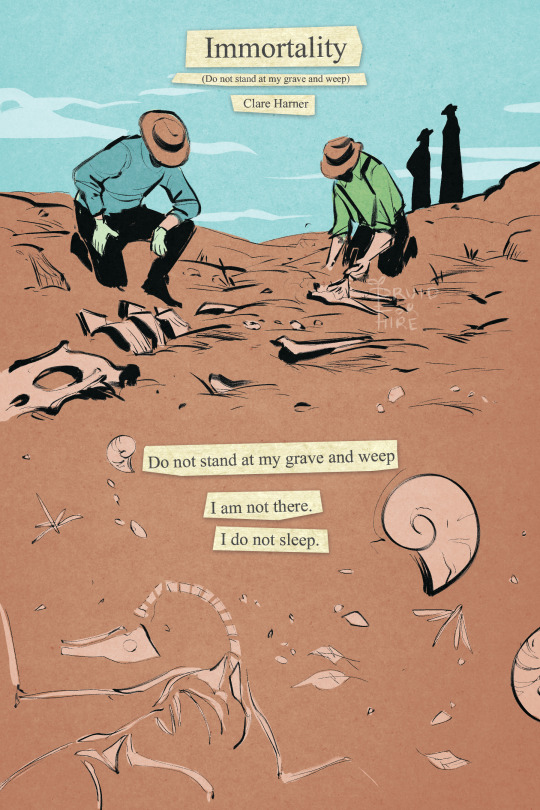

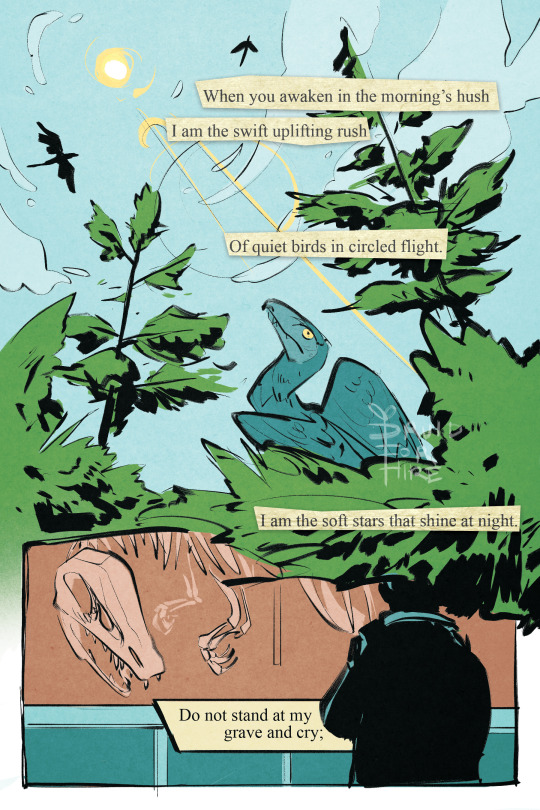
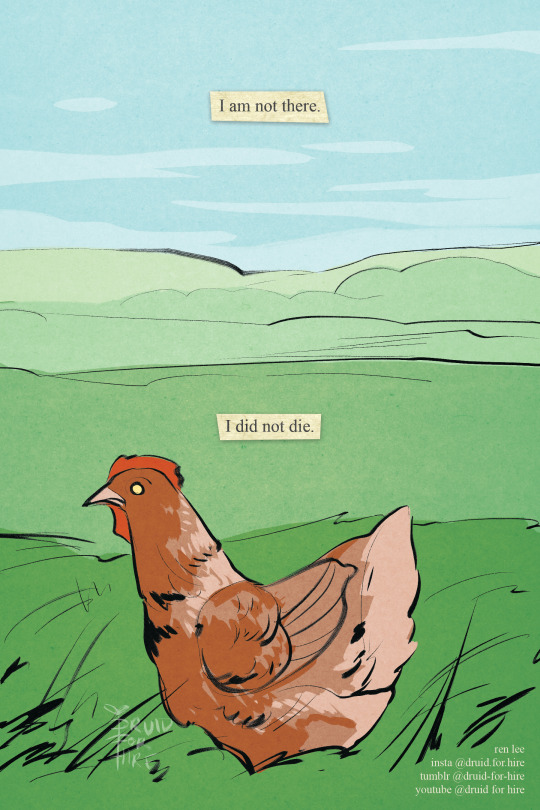
[image id: a four-page comic. it is titled "immortality” after the poem by clare harner (more popularly known as “do not stand at my grave and weep”). the first page shows paleontologists digging up fossils at a dig. it reads, “do not stand at my grave and weep. i am not there. i do not sleep.” page two features several prehistoric creatures living in the wild. not featured but notable, each have modern descendants: horses, cetaceans, horsetail plants, and crocodilians. it reads, “i am a thousand winds that blow. i am the diamond glints on snow. i am the sunlight on ripened grain. i am the gentle autumn rain.” the third page shows archaeopteryx in the treetops and the skies, then a modern museum-goer reading the placard on a fossil display. it reads, “when you awaken in the morning’s hush, i am the swift uplifting rush, of quiet birds in circled flight. i am the soft stars that shine at night. do not stand at my grave and cry.” the fourth page shows a chicken in a field. it reads, “i am not there. i did not die” / end id]
a comic i made in about 15 hours for my school’s comic anthology. the theme was “evolution”
#dinosaur#evolution#comic#prehistoric#animal#wildlife#paleontology#biology#poetry#comics#original#my art#archaeopteryx has no direct living descendants i know#but i wanted something aerial and the dinosaur to bird connection is classic and well known anyway#also the chicken over any other bird is very on purpose#its the mix of truth and comedy and genuineness and the fantastic in the mundane#its me asking you to see something so wonderful in something taken so un-seriously#and to love it both ways#also the jurassic park thing#where someone saw the reconstructed gait of a dino#and said. hey hang on. i know that walk.#and pulled up footage of a chicken walking#which jumpstarted the entire study into the link between dinosaurs and birds#in the end take whatever you want from it i just thought id provide some insight#i always like it when other artists do#the point is that i enjoy when people laugh at the end and when they dont#and i like it when they cry. i like it best when they both laugh and cry. eeaao intent#anyway mourn your losses but to live is to change#also hi guys i finally figured out tipping after 5 months so no more annoying ko-fi link
145K notes
·
View notes
Text
The Takin is such a whimsical herbivore, like God commissioned Dr. Seuss for this one.



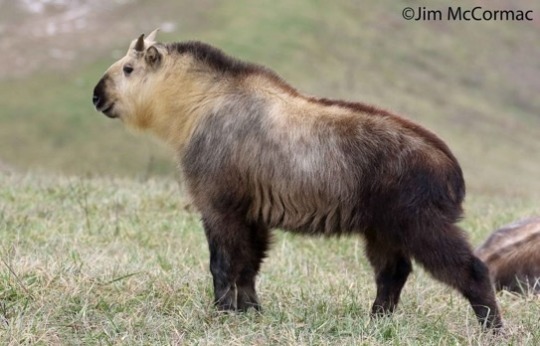
#speculative biology#speculative ecology#speculative evolution#speculative zoology#traditional art#traditional sketch#spectember#paleontology#specposium#fanart#animals#takin#cute animals#paleo meme#paleo#paleoillustration#paleo art#paleontologist#paleoblr#creature#shaggy animal#herbivore#dr. seuss
23K notes
·
View notes
Text
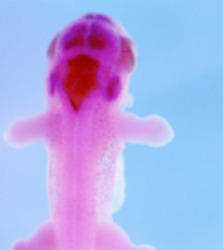
now accepting guesses as to what this embryo becomes when it matures
#evo-devo is a hell of a drug#zoology#animals#embryology#nature#evolution#can't post a source without giving it away so… sorry.#but the first author on the paper is named Gross#which is just#*chef's kiss*
7K notes
·
View notes
Text
Shellback Crabs: these crabs create their own shields out of clamshells; their semi-membranous bodies can be pressed into the contours of the shell, producing a suction mechanism that holds the shell in place
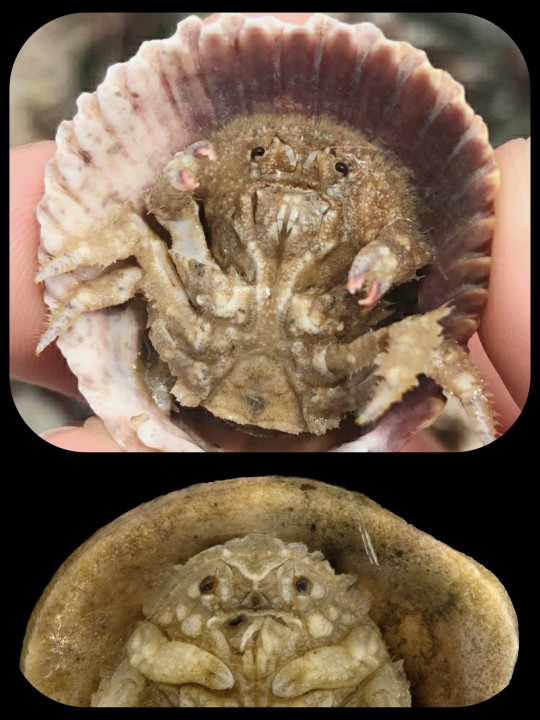
The members of this genus (Hypoconcha) have a series of unique adaptations that facilitate this kind of camouflage behavior. Many of the Dromiidae crabs (e.g. hermit crabs, sponge crabs, shellback crabs, etc.) are equipped with a specialized pair of legs that enables the crab to hold a shell, sea sponge, and/or ascidian against their body, but shellback crabs also have a flexible, semi-membranous body that can be tucked more firmly into the contours of a bivalve shell, producing a suction mechanism that keeps the shell firmly locked in place.
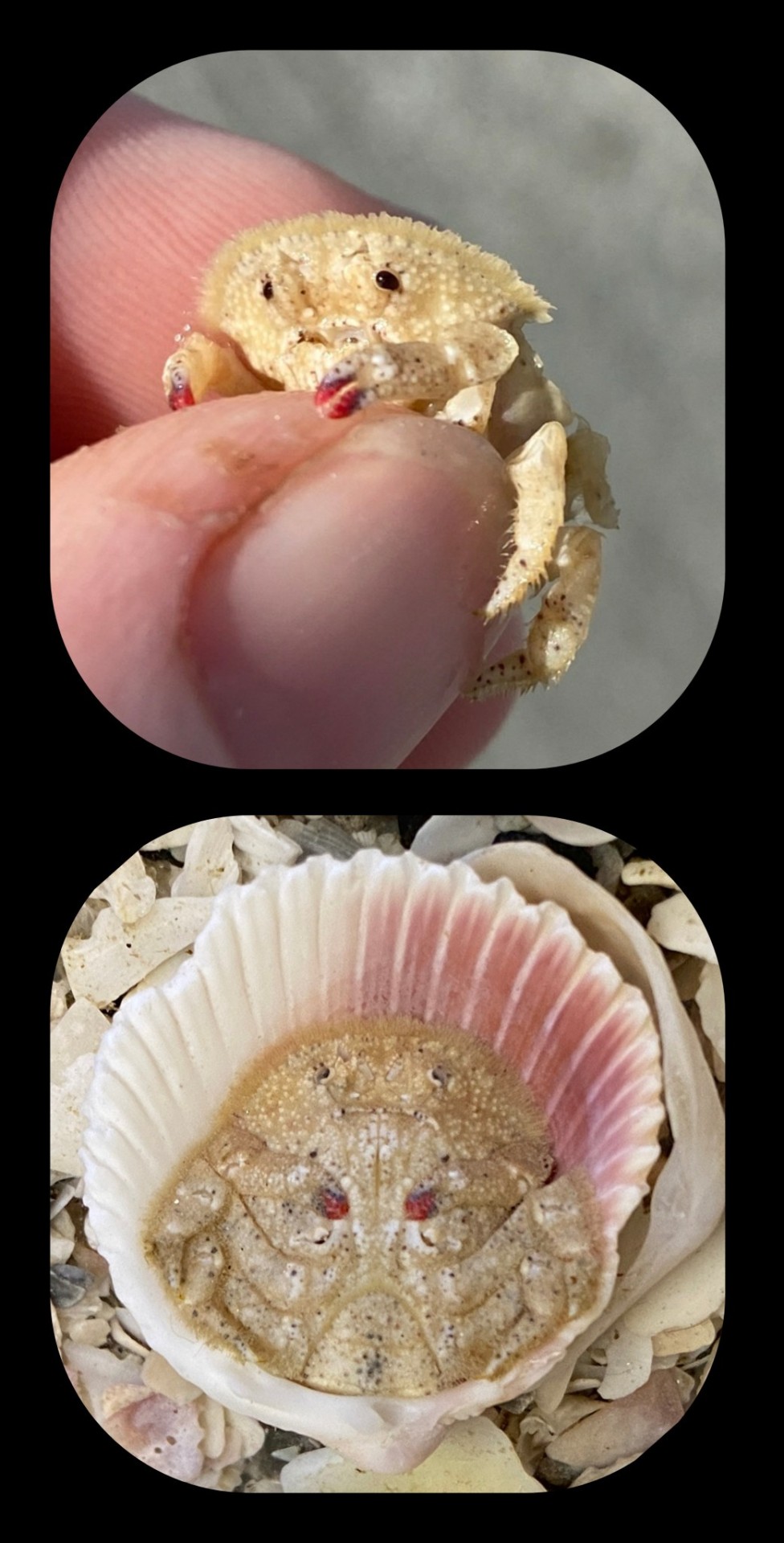
The body of the shellback crab is also covered in a very fine layer of hair-like structures called setae, and when the crab presses itself against the shell, these membranous "hairs" can take on an almost translucent appearance, particularly around the margins of the crab's body.
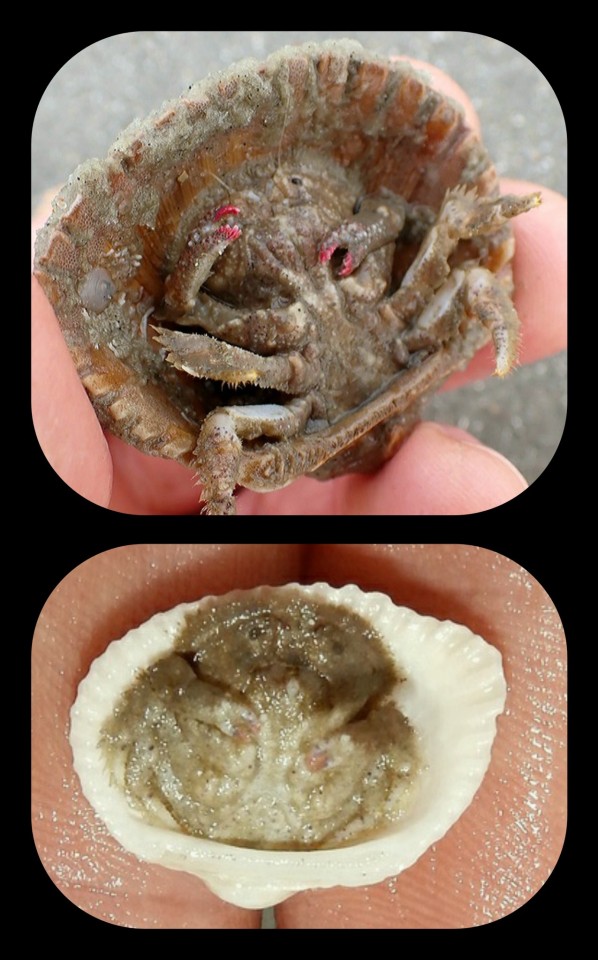
I recently posted some photos/info about some of the crabs in the genus Lamarckdromia (which belongs to the same family) and as I was doing the background research for that post, I was just kind of mesmerized by all of these weirdly adorable crabs that seem to exist within the Dromiidae family tree. Each genus has its own unique adaptations that allow the crabs to use specific materials for camouflage -- some of them use living sponges, clamshells, ascidians, etc.
And I could not stop laughing at the little faces on these crabs. They've all got the same bemused/indignant expression...as if some random asshole has just walked up to them, shoved them over, and announced to the entire ocean that there's a crab hiding beneath that disguise; as if that actually happens to them quite a lot, and they're getting really sick of it.

Sources & More Info:
Crustaceana Monographs: Comparison of the Shell-Carrying Behaviors of Desmodromia, Conchoecetes, and Hypoconcha (the relevant info is on page 191)
South Carolina Department of Natural Resources: Shellback Crabs and their Larval Stages (PDF)
South Carolina Public Radio: Shellback Crabs
Again, I don't normally feature crustaceans on my blog...but I really couldn't resist this one.
#arthropod#crustacean#marine biology#sea life#crab#shellback crab#hypoconcha#evolution#biology#cute animals#nature is weird#these guys look awfully crabby tho
12K notes
·
View notes
Text
Okay, so this is really cool! You have this phenomenon where some plants grow edible appendages to their seeds to entice ants to carry them underground where they can safely sprout. And then you have wasps which lay their eggs on the leaves, stems, and other parts of plants and trigger the growth of galls (swellings) which both feed and protect the wasp larvae until they reach maturity.
The boy who was watching the ants noticed they were taking wasp galls underground, too. Further exploration found that the wasp larvae were unharmed inside the galls; the only thing the ants had eaten were edible appendages similar to those on the seeds they collected. The wasp larvae stayed safe inside the ant nest, feeding on their galls, until it was time to emerge and head back out to the surface.
So it turns out that the edible portions of the galls have the same sorts of fatty acids as the edible parts of the seeds. And those fatty acids are also found in dead insects. Scientists think that the wasps evolved a way to make the galls they created mimic the edible portions of the seeds to get the ants to collect the galls. This isn't the only example of wasps making use of ants as caretakers for their young, but it's a really fascinating example thereof--especially if you consider ants evolved from wasps at least 100 million years ago.
#wasps#ants#plants#galls#oak galls#insects#invertebrates#Hymenoptera#ecology#bugs#animals#wildlife#nature#trees#entomology#science#natural science#evolution#animal behavior
12K notes
·
View notes
Text

I’ve been staring at the edge of the water Long as I can remember
Never really knowing why
#silly#sillyposting#196#rule#r/196#ruleposting#r196#meme#animal memes#biology memes#marine biology#zoology memes#evolution#pakicetus#whales#moana#disney#my posts
2K notes
·
View notes
Text
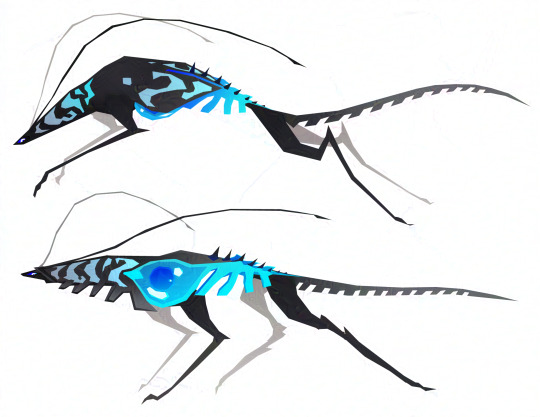
Minewolf 🐺 🦗🧨
(Novacanis Liquidus Detonare) or Xittocoyotl
"Large insectoid canines with a sharp explosion-proof exoskeleton. They carry and produce a blue liquid in their body akin to nitroglycerine which they eject to defend and attack. Whilst solitary they can group together like a wolf pack and excel at hunting.
Thanks to their unmatched sense of smell they’re able to detect hazards early, the odor of mines and other explosives even if in different states of matter, becoming incredibly useful to demine fields after undergoing training and domestication. This species can be avoidant of humans however but once trust is gained they may become loyal companions."
#digital art#digital illustration#creature#aesthetic#art#creature design#concept art#fantasy creature#fantasy#artwork#art commissions open#demon oc#monster#speculative biology#speculative evolution#ecosystem#concept design#animal#original art#original creature#canine#wolf#insect#insects#bugs#exoskeleton#antennae#wolfdog#nature
1K notes
·
View notes
Text
So, we know modern domesticated, (and even some wild!) animals enjoy being petted.
The question is. How far back in the history of evolution does this trait go?
What dinosaurs and other prehistoric animals would have loved a good head rub?? Which ones would have flopped over for some under-the-chin scritches??? Would some of them have headbutted you to ask for more affection like a cat??? Did some make happy sounds, like purring???
This is information I need. I need to know. Animals today exhibit these behaviors so it's pretty likely they could have done so in the past too!!
The idea of them being affectionate towards each other as well (as opposed to how they're often portrayed hunting/fighting/being scary) makes me happy too. I desperately wish we could see how they behaved.
#dinos#dinosaur#dinosaurs#animal evolution#evolution#paleontology#prehistory#prehistoric#pls i need to know#gushing#gush#rant post#rant#late night rambles#ramble#dang i love dinos
4 notes
·
View notes
Text
Much like monkeys swinging from branch to branch, some parrots can swing through the trees with the greatest of ease, scientists have learned. But these colorful birds grip the branches with an unusual appendage: their beaks.
Rosy-faced lovebirds can use their adaptable beaks as a third limb that supports them even as they swing like gibbons and spider monkeys. In research published Tuesday in Royal Society Open Science, scientists describe how the parrots hung underneath a 3D-printed “branch” and moved along by using their beaks and hind legs in tandem to alternately grasp, swing like a pendulum, let go and reattach themselves a few inches farther along.
Continue Reading.
1K notes
·
View notes
Text
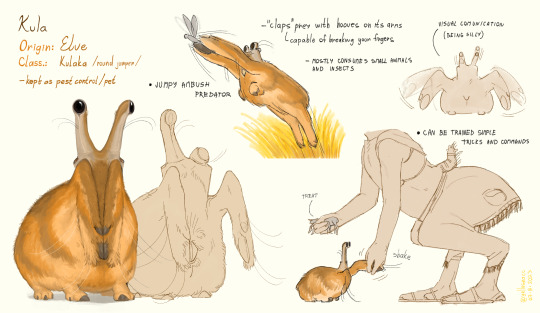
Kula!
A popular domesticated animal of slomen.
Kula are adapted for grassy areas with lots of small prey. In the wild, they either jump after flying or jumping prey or wait at burrows before smashing their prey with their hooves. If the smash isn't enough they hold it to their beak and finish it. Some species are more specialized to wait while others to jump. The domesticated Kula is speculated to be one of the more energetic hunters, mostly interested in 'insects'.
In ancient times wild Kula were attracted to sloman settlements as they would also attract prey with the slomans' food and light.
The slomen would soon learn that Kula were not pests since the wild animals were yet to be spoiled by premium meat cuts and preferred fresh moving meat that the slomen didn't want around.
In current times many cultures keep these animals as pest control on farms and in larger houses. They can be commonly seen in underground rooms that serve as food storage but for a healthy mental state, they need time on the sun.
While in the wild they are usually solitary or in small groups, Kula have a complex body language that they use to express their mood and/or needs. This can be very cute and funny, helping them become as loved as they are.
Many owners will grow to care deeply for their Kula but some cultures recognize them directly as pets. In the high-ranking societies of these cultures, pet Kula get even rounder. Often a certain trait is popular in a culture, resulting in localised breeds with different shapes and colors.

Some little goober possibilities - not entirely canon
In a few places, Kula are also part of a religion and have their own shrines.
#art#speculative biology#artists on tumblr#digital art#artwork#worldbuilding#speculative evolution#fantasy#spec bio#original alien species#original species#spec evo#speculative zoology#xenobiology#domesticated animals#slomen
2K notes
·
View notes
Text
Lobe finned versus ray finned fish

Short answer: ray finned fish evolved from from lobe finned fish
Long answer: Lobe finned fish were dominant for a long time in the waters before they climbed up onto land and evolved into you, dear reader. This occurred around 400 MYA (million years ago). Sometime before that, about 425 MYA, ray finned fishes had evolved, but remained relatively small. This was until the permian mass extinction (290-245 MYA), when many lobe finned fish died out, and ray finned fishes (teleosts) were left to flourish and evolve to fill the empty evolutionary niches. The only lobe finned fish left behind today are the elusive coelacanths and lungfish. ***AND*** as the awesome people in the notes would like me to add, all tetrapods (tetra meaning four, pod meaning foot) are phylogenetically lobe finned fishes as well. this means amphibians, reptiles, and mammals.
@marinebiologyshitposts @fuckyeahcoelacanths
#marine biology#lobe finned fish#ray finned fish#coelacanth#evolution#science#things ya should know#zoology#biology#ecology#animal facts#animals
1K notes
·
View notes
Text
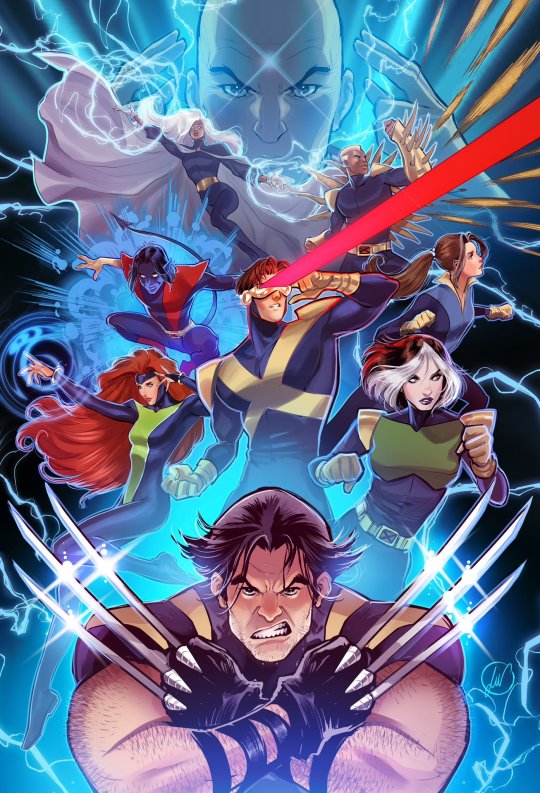
X-Men: Evolution by Lucas Werneck
#X men evolution#Wolverine#Rogue#Cyclops#Scott Summers#Jean Grey#Shadowcat#nightcrawler#spyke#storm#ororo munroe#professor x#marvel#television#Animation#x men#comics#pin up#poster#Illustration#art#top posts
1K notes
·
View notes
